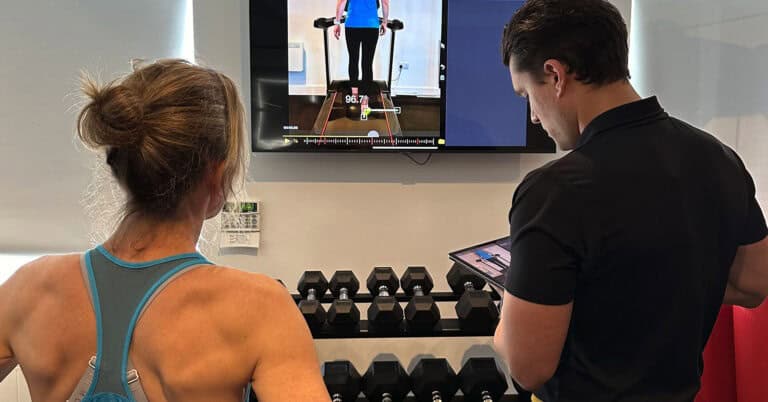Most people are affected by headaches multiple times during their lives, and millions suffer from migraines.
But do you know what the difference is? So many times we hear in the clinic “I have a migraine”, but is that true? Or is it just a headache? Making the distinction might help you learn more about how to manage the problem.
What is a Migraine?
Migraine is defined as a throbbing, pulsating pain on one side of the head. It can last from hours to days and is often accompanied by nausea, vomiting, sensitivity to light or even sound and smell. They are recurring and they can happen several times a week or just occasionally. Most commonly they happen twice a month. They are three times as likely to occur in women, and can be associated with stress and menstrual period. They are of neurological nature.

In many cases there are 4 phases to a migraine:
- Prodrome: up to 24 hours before developing a migraine some people can experience mood changes, difficulty concentrating, tiredness, incessant yawning, unusual hunger and thirst, more frequent urination, nausea.
- Aura: in the 60 minutes preceding the appearance of the migraine pain symptoms that can be experienced are vision changes like bright lights or waves, muscle weakness, feeling of being touched, ringing in the ears (tinnitus), difficulty speaking or concentrating, numbness, tingling.
- Headache phase: the headache can be very intense, it will be throbbing, and can be associated with nausea, vomiting, light sensitivity, even smell and sound sensitivity. This phase can last from just a few hours to 3 days.
- Postdrome: after the pain disappears fatigue, nausea, sensitivity to light and sound can remain accompanied by dizziness and stiff neck and tiredness. This phase can last up to a day.
There is variation in the presentation of migraine, from headache without the other phases to aura without headache.
The causes of migraine are not yet fully understood but it is believed that they are related to the circulatory system inside the skull. Genetic, environmental and stress factors are also heavily involved.
What are primary and secondary headaches?
Headache is a pain on your head or face that can vary widely in location, intensity and character of pain, from vise-like to constant to throbbing, it can be sharp or dull. There are 150 or more types of headache, but mostly they can be primary or secondary.
Migraine is a primary headache and it has its own characteristics as we have just seen.

Other types of primary headaches are:
- Tension headache, the most common, caused by tension building up in your neck and shoulder muscles and caused by stress, bad neck posture, eye strain, jaw tension, lack of sleep.
- Cluster headaches, one sided headaches that last for 15-30 minutes but that can happen even 8 times a day for periods of up to three months. It can then stop for months or years before recurring again.
The types of secondary headaches appear as a consequence of another condition or issue. For example:
- Dehydration headache
- Sinus headache
- Alcohol related headache
- Cervicogenic headache
The type of headaches we want to concentrate on today are migraines, tension headaches and cervicogenic headaches, their correlations and what we can do about them in our clinic.
In the first place, migraine, tension and cervicogenic headaches are not mutually exclusive: nobody told your head that it can have only one of them.
About Cervicogenic Headaches
Cervicogenic headaches differ from migraines and tension headaches because they are classified as a secondary type of headache, caused by a cervical spine dysfunction. They are caused by sudden neck movements or prolonged positions, and they are one sided. The pain is constant and can be localised on the back, side or front of the head or around the eye and orbit and is associated by neck symptoms. Often it is linked to a dysfunction of the first three cervical vertebrae. It can have symptoms similar to migraines, like nausea, vomiting, blurred vision, light and sound sensitivity.
About Tension Headaches
Tension headaches are considered primary headaches and they are caused by tension in the musculature of your neck and upper shoulder/trapezius. As mentioned above, they are triggered by stress and bad posture, eye strain and lack of sleep. The pain is constant and feels like pressure or a tight band around the head. It tends to be associated with tension and ache in the neck and shoulders and it can also produce migraine-like symptoms like light and sound sensitivity.
As you can see, the identification of which kind of headache you have can be quite confusing, but there are some unique characteristics to the three types we are looking at.
Let’s list the differences here;
| Type | Pain | Location | Associated symptoms unique to type of HA |
| Migraine | Throbbing | One sided | Four phases |
| Tension headache | Constant, pressure, band around head | Both sides | Neck and shoulder tension |
| Cervicogenic headache | Constant | One sided | Cervical symptoms |
This might be a simplistic way to look at it, but it is a starting point to understand what kind of headache you might have.
Why is it important?
Your chiropractor, massage therapist and acupuncturist might be able to help you in all three cases.
First of all, you might have only one, two or even all three kinds of headache at different times or interacting with and triggering each other. A tension headache can trigger a migraine episode, or the associated tension can induce cervical issues that will trigger a cervicogenic headache. The opposite is also true, where cervical dysfunction can lead to and increase in muscular tension around the neck and shoulders and trigger a tension headache or a migraine.
How can we help?

Help for cervicogenic and tension headaches
Cervicogenic headaches can be helped with cervical manipulation, massage, fascial release, needling, even specific exercises and lifestyle changes like better sleep hygiene, lessening stress, choosing a healthy diet, improving the posture at work. The first practitioner to see is the chiropractor here, and they will then direct you to the other practitioners that will be able to help you as well if necessary.
The same treatment options are available and effective also for tension headaches, and a reduction of the muscular tension will lessen or resolve your headache episodes. The chiropractor is still a good first port of call, but a massage therapist or acupuncturist will also be very effective. Again, team work among the practitioners will give you the best results.
Help for migraines
With pure migraines, we won’t be able to change your neurological symptoms, but we can certainly help reduce the possible triggers and advise on the lifestyle changes that can help reduce the severity and frequency of your migraine attacks.
The triggers that we can help with are the physical ones, like the cervical dysfunction, neck and shoulder tension, postural changes and advice, lifestyle changes and advice on diet and exercise.
The nutritionist will also be able to help you in all three kinds of headache with a better balance with your diet and the correct supplementation to reduce the symptoms and the triggers.
Lastly, the personal trainers will create a training program tailored to your case to improve your neck, shoulder and upper back strength and flexibility to reduce the reoccurrences of neck and shoulder tension and cervical dysfunction.
The key takeaway is that understanding what type of headache you might be suffering from can help you make a decision about how to tackle the problem and whose help to seek to do so. Our team of practitioners will be able to help you manage your headache and get a better quality of life.


